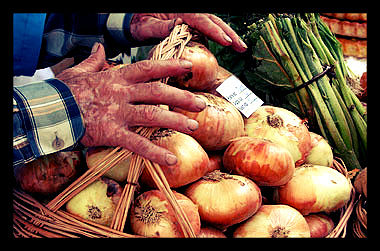How Bad is the Global Food Crisis?

A billion people in the world suffer from hunger or malnutrition. While most of the world’s hungry live in places with high rates of extreme poverty, such as Africa and the Middle East, many also live here in the United States. Some consider a billion hungry people the definition of a global food crisis. Others say that things could get much worse. Either way, hundreds of social, agricultural, and humanitarian organizations are working to alleviate hunger and improve food security in the world’s most vulnerable regions.
Over the last five years, droughts, extreme temperatures, and unusual weather in some of the world’s most productive agricultural regions, including the US, have caused prices for wheat, corn, soybeans, and other food staples to increase dramatically. This has led to higher prices for many food products, especially animal products. As usual, the world’s poor have been most affected by the increase in prices. For those who either spend a substantial amount of their income on food or rely on subsistence farming to feed themselves, a certain increase in the price of food directly results in ongoing hunger and food insecurity.
Different crops affect various populations in distinct ways. Rice and wheat are the two major cereal staples in the diets of the world’s poor. Therefore, as long as those prices remain stable, a global food crisis can be averted. While increases in the price of corn will affect gas prices and meat prices, this will not necessarily contribute to a global food crisis. Most corn grown in the US is either manufactured into ethanol or fed to livestock, and the world’s poorest people cannot afford to buy much meat or gasoline in the first place.
However, a low yield of one crop can put pressure on the production and export of other crops. When the corn crop suffered in 2012, this caused an increased demand for wheat as livestock feed. This demand drove up the price of wheat, and reduced the supply of wheat available for export to places such as the Middle East, where much of the population relies on imported wheat for sustenance.
Economists and food experts warn against overreacting to high prices, as panic can create tighter restrictions and more problems. In order to begin to solve the global food crisis, we must focus not on what has gone wrong, but on what can be done to increase agricultural yields, implement sustainable farming methods, improve consumer access to affordable, healthy food, and help more of the world’s poor achieve food security.
The UN Children’s Fund (UNICEF) has recommended that structural causes of food insecurity be addressed through the complementary techniques of short-term emergency aid and long-term sustainable development and poverty reduction efforts.
– Kat Henrichs
Source: IRIN
Photo: World Bank
